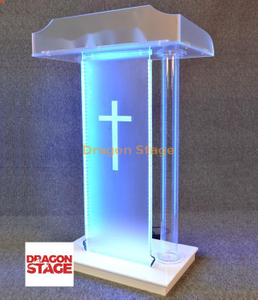
There are three common ways to install LED screens. 1. Install the large screen using a stacking truss. Simple and fast, with the disadvantage of poor load-bearing effect and insecurity. 2. Installing a large screen with a goal post truss is not very safe in strong winds, and the visual effect is not very good. 3. Installing a large screen with a layer truss and fixing it on a shelf has a relatively stable structure and is relatively safe. It is also a commonly used method nowadays.
The Art of Installation: A Comprehensive Look at LED Screen Mounting Techniques
The integration of LED screens into various environments, from bustling city streets to grand event venues, necessitates a meticulous approach to installation. While delivering breathtaking visuals and impactful messaging, the safety and structural integrity of these displays are paramount. This essay will delve into three prevalent methods of LED screen installation, analyzing their advantages, disadvantages, and suitability for specific applications.
1. The Stacking Truss Method: A Fast and Economical Solution

The stacking truss method, a popular choice for its simplicity and expediency, involves utilizing interconnected truss sections stacked vertically to support the LED screen. This technique offers several key benefits:
Rapid Deployment: Its modular design allows for quick assembly and disassembly, making it ideal for temporary installations or events with tight timelines.
Cost-Effectiveness:The use of readily available truss components contributes to an overall lower installation cost.
However, the stacking truss method also presents inherent limitations:
Limited Load-Bearing Capacity: The stacked nature of the truss reduces its overall strength, potentially posing a risk in scenarios with heavy screens or high winds.
Stability Concerns: The lack of a rigid, interconnected structure can result in instability, particularly during adverse weather conditions.
Aesthetics: The stacked truss design can be visually jarring, particularly in settings requiring a sleek and unobtrusive appearance.
2. The Goal Post Truss Method: A Compromise Between Efficiency and Safety

The goal post truss method utilizes two vertical truss sections resembling goal posts, connected by a horizontal truss beam to support the LED screen. This approach aims to provide a balance between speed and stability:
Relatively Quick Installation: Similar to the stacking truss, the modular design facilitates efficient assembly.
Improved Stability: The goal post configuration offers increased rigidity compared to stacking trusses, enhancing resistance to lateral forces.
However, this method also comes with drawbacks:
Wind Vulnerability: The exposed vertical truss sections can be susceptible to strong winds, potentially leading to instability or damage.
Limited Visual Appeal: The prominent goal post structure can detract from the overall visual aesthetics, especially in spaces prioritizing a seamless visual experience.
3. The Layer Truss Method: A Stable and Secure Choice

The layer truss method employs a more robust structure, involving multiple layers of interlocked truss sections that are mounted on a fixed platform or shelf. This method stands out for its superior stability and safety:
Enhanced Structural Integrity:** The interconnected layers of truss components provide a significantly stronger and more stable base for the LED screen, ensuring resistance to various forces.
Reduced Wind Vulnerability: The solid, layered structure significantly minimizes the impact of wind forces, enhancing overall safety.
Aesthetic Flexibility: The layer truss method allows for greater customization and integration, enabling seamless integration with surrounding structures and architectural elements.
While the layer truss method offers superior structural integrity and safety, it comes with certain considerations:
Higher Installation Costs:The complex design and increased materials often translate to a higher installation cost compared to the other methods.
Time-Intensive Installation: The intricate design and assembly require more time and skilled labor compared to simpler truss configurations.
Conclusion: Tailoring the Installation Method to the Specific Needs
The choice of LED screen installation method ultimately depends on the specific requirements of the project, encompassing factors such as screen size, weight, environmental conditions, budget, and aesthetic preferences.
For temporary installations, events, and situations prioritizing speed and cost-effectiveness, the stacking truss method remains a viable option.
The goal post truss method presents a compromise between stability and speed, suitable for installations where wind exposure is moderate and visual aesthetics are less critical.
The layer truss method provides the highest level of stability and safety, making it an optimal choice for large, permanent installations, especially in locations with high wind conditions or demanding structural requirements.
By carefully evaluating these factors and selecting the most appropriate installation method, project stakeholders can ensure the successful and safe integration of LED screens, delivering exceptional visual experiences while prioritizing structural integrity and safety.
















































